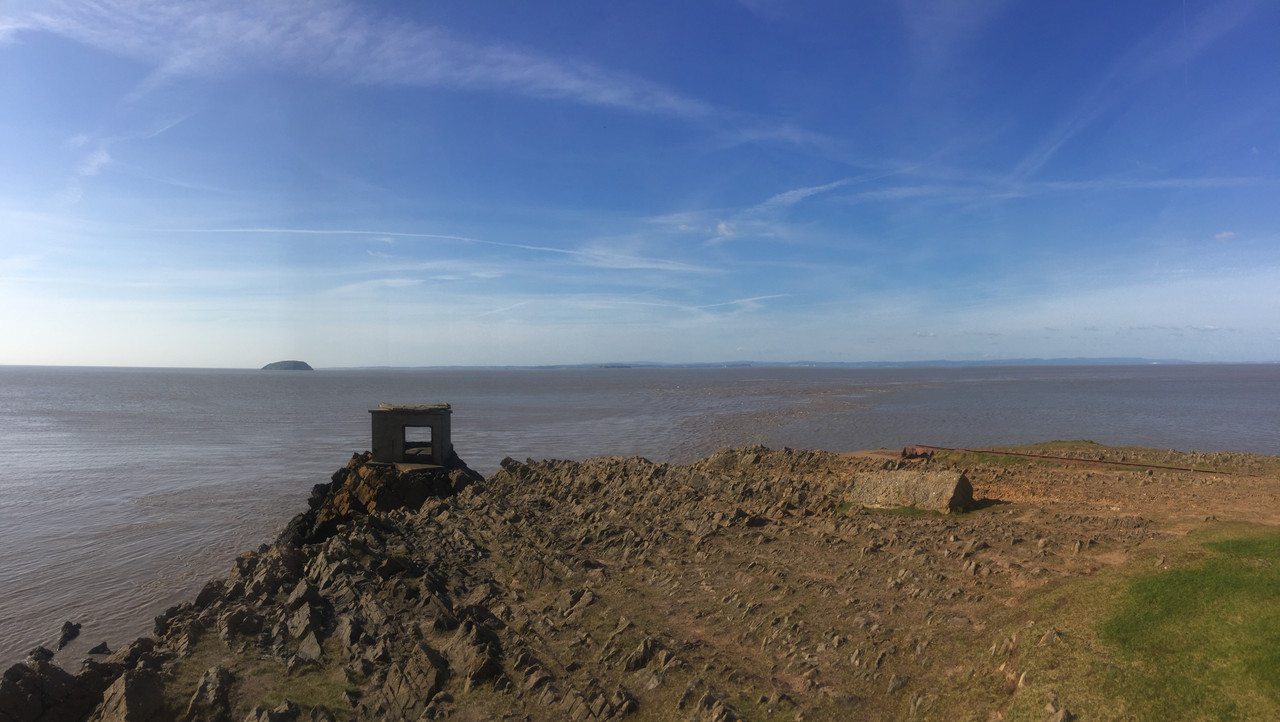MegaSack DRAW - 6pm Christmas Eve - LIVE on our YouTube Channel
91 years ago today - the first recorded swim across the Bristol Channel.

She set off from Penarth at 4.15am, and the crossing took her 7 hours and 20 minutes. Although the distance is 11 miles, it’s actually calculated to be 22.5* once you factor in the brutal currents.
* How would one calculate that?
Obviously conditions are immensely changeable from day to day, season to season, year to year. But if possible (given some kind of ‘average’ optimal weather condition and season) - which of the two Channels would be the greater challenge for a given swimmer?
Edit - longer article here:
https://www.dai-sport.com/91-years-ago-woman-porthcawl-made-swimming-history/
I'd guess the tide causes you to be swimming against it so that may explain the longer distance. Like running 100m on a conveyor belt. You only run 100m relative to the start but could be 5km in your legs.
Bit of a mind game that. Like riding into a strong headwind only colder and taking you in a direction you don’t want to go.
Any long distance swimmer stuff reminds me if Victoria Woods sketch.
* How would one calculate that?
It's basically the same as an aeroplane flying into the wind. To travel 100 miles relative to the ground it might have to move 120 miles of air over it's wings.
Seeing the way the water moves in the Bristol Channel and the size of the tides, I would say Bristol would be the greater challenge.
A friend of mine swam the channel, and the GPS track of her (actually the pilot boat) shows she swam a huge S as the tide took her south away from the direct route then as it turned, north. I think she covered 33 ish miles as opposed to the 21 direct. I think the Bristol Channel tides are even stronger
If you looked at the tide charts could you not use them to your advantage? Just jump in, tread water and be deposited on the opposite bank twenty miles away with the minimum of effort...
I think she covered 33 ish miles as opposed to the 21 direct
On one had though, she may have swim 21 herself, while the currents moved her about to make it 33.
Sorry I should have been more specific ie ‘how does one most accurately calculate that?’*
I’d guess the tide causes you to be swimming against it so that may explain the longer distance. Like running 100m on a conveyor belt. You only run 100m relative to the start but could be 5km in your legs.
Agreed, that much is obvious - yet swimming across a channel could be like running diagonally across multiple conveyor belts of differing speeds and directions, sometimes being carried backwards, sideways, or propelled forwards, etc?
I suppose nowadays some measuring-device could be designed/worn, featuring accelerometer, accurate location tracking etc...
If you looked at the tide charts could you not use them to your advantage? Just jump in, tread water and be deposited on the opposite bank twenty miles away with the minimum of effort…
No. the current runs roughly north to south then south to north. No east or west component.
I always thought the Bristol channel was considered to dangerous as it's so difficult to judge the current in a particularly part at any given time.
I suppose nowadays some GPs + accelerometer measuring device could be worn
You could use something like an electromagnetic log or doppler log to measure the speed though the water and then compare it with your ground track from a GPS, which be fitted on the support boat which follows the swimmer.
You could probably tow a tiny little turbine or something to measure water speed.
And yeah there's no way I'd want to swim across there. Well - if I had to, I'd go upstream and at low tide then I'd be able to wade most of it. Although given the mud it'd probably be harder still!
If you looked at the tide charts could you not use them to your advantage? Just jump in, tread water and be deposited on the opposite bank twenty miles away with the minimum of effort…
That might work if the currents somehow deposit you on the ‘opposite bank’ and the treading of water = less expenditure over the time required to achieve it.
Award for ‘easiest crossing?’ 😀

Interesting facts:
Along with the Severn Estuary (MCA 1), the Bristol Channel has the second highest tidal range in the world.*
Channels run perpendicular to the east-west tidal currents, which accelerate in the east due to the funnelling effect of the land.
*So even given a neap tide in ideal conditions I could see how the BC currents would be swift
This place is losing its focus. No mention of treadmills and aeroplanes when it's a thread crying out for it.
Seeing the way the water moves in the Bristol Channel and the size of the tides, I would say Bristol would be the greater challenge.
Not a greater swimming challenge but possibly a greater pilot challenge. All these swims are done with a pilot boat. The swimmer takes station off the boat. The pilot/navigator of the boat makes the calls about the direction and timing of entry to the water. The key bit is they know/understand the capabilities of the swimmer. If the swimmer falls off the pace (through fatigue or sea state) all the calcs go to shit. On the English channel swim the target to drop the swimmer on Cap Gris Nez. If the swimmer drops just 5% off the agreed/planned pace and you miss the Cap it will add literally hours to the swim time as the tide rips to north east.
If you looked at the tide charts could you not use them to your advantage? Just jump in, tread water and be deposited on the opposite bank twenty miles away with the minimum of effort…
🙂 No.
The channels have sideways currents rather than currents from one side to the other. It has been calculated however that you could get a message in a bottle to circumnavigate mainland uk in an astonishingly short amount of time if you take the bottle out of the water and back at carefully calculated times. The feats of the like of Sean Conway swimming the length of the country using exactly that technique don't look quite so impressive when you realise the bottle would not that far behind!
Ground speed v water speed
Exactly - The 22.5 miles quoted in the OP would have been the distance over ground that the swimmer's body travelled, not how far she would have swum in a pool in the same time.
A friend of mine swam the channel, and the GPS track of her (actually the pilot boat) shows she swam a huge S as the tide took her south away from the direct route then as it turned, north. I think she covered 33 ish miles as opposed to the 21 direct. I think the Bristol Channel tides are even stronger

Indeed. This is typical one. Missed the Cap but got in pretty well. The rule of thumb is you don't waste any energy fighting the tide - it will always win. You just time your swim so you get drifted back in the opposite direction just the right amount. I was in charge of a cross solent swim and we worked out the entry window for the two pods of swimmers (knowing their capabilities) was only about 15mins wide. In the event one swimmer had stomach issues and dropped off the pace getting distanced from his pod. We ended up having him swimming into the current near one of the forts for 2 extra hours stopping him getting swept into the harbour waiting for the tide to turn and make it the last little bit into the beach. A hell of an achievement.
Tides in the Bristol Channel are worse than the English Channel - I remember crewing on a boat sailing out of Swansea, heading to Milford Haven. I took the 12-2am watch and as I came off watch logged our position with Lundy Light a few miles off our starboard bow. Came up 6 hours later to find Lundy Light a few miles and a bit off our port bow - so in 6 hours of motor sailing at about 6 knots we'd gone backwards - there was also a quite strong south-westerly, so against the tide it was lumpy too - lots of seasickness even on a 90ft boat.
(BC) Not a greater swimming challenge
Are your calculations based on ground distance alone (BC vs EC)?
Sorry I should have been more specific ie ‘how does one most accurately calculate that?’*
Basic navigation. Vectors, innit.
The Admiralty publish tidal atlases that give the strength and direction of tidal currents for each hour by location (some of this is printed on nautical charts). One takes one’s starting time (relative to high water) and looks up the tidal currents near one’s starting point. Plot the vector of your estimated speed through the water and the tidal current for one hour and see where that puts you. Look up the tidal currents for hour 2 at your estimated location and plot the vectors for hour 2. Repeat until landfall.
They’ve been doing it this way for hundreds of years.
https://www.seachest.co.uk/tidal-information-books/np258-tidal-stream-atlas-bristol-channel/
If you get into the BC and let the tide take you, you’ll either end up in Bristol or the Atlantic!
One takes one’s starting time (relative to high water) and looks up the tidal currents near one’s starting point
Neglected to mention that one also interpolates between spring and neap tidal currents depending on phase of moon.
Like I said, it’s been done this way for hundreds of yesrs.
Are your calculations based on ground distance alone (BC vs EC)?
Likely swim time,
Likely sea state
Likely water temperature.
The extra time of a EC swim means that the chance of the conditions changing increases, or looked at another way a consistently good sea state for the whole crossing is much less likely. Most cross channel swims that fail do so because the sea state changes and slows the swimmer down so much that the swim length becomes longer (as they get swept down towards Calis).
And yeah there’s no way I’d want to swim across there. Well – if I had to, I’d go upstream and at low tide then I’d be able to wade most of it. Although given the mud it’d probably be harder still!
Given the mud, you’d be static waiting for the tide to come in at roughly 3mph until you drown. And you most certainly wouldn’t be able to wade most of it, even at low tide - the navigable channel takes very large ships carrying hundreds of cars, up to Royal Portbury Dock at Avonmouth, and its navigable up to Sharpness.
You really wouldn’t want to try swimming anywhere near the end of Brean Down except at exactly to point the tide turned, it’s very messy!
This is about as close to the end of Brean Down as I’m prepared to get, you can see how the tide runs to the right hand side of the searchlight installation, and further right you can just see Cardiff as the small patch of white on the far side of the channel.
That current can be rough in a boat, bugger trying to swim in it!


